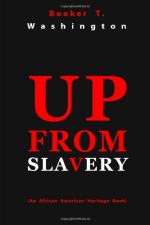Brickmaking has now become such an important industry at the school that last season our students manufactured twelve hundred thousand of first-class bricks, of a quality stable to be sold in any market. Aside from this, scores of young men have mastered the brickmaking trade—both the making of bricks by hand and by machinery—and are now engaged in this industry in many parts of the South.
The making of these bricks taught me an important lesson in regard to the relations of the two races in the South. Many white people who had had no contact with the school, and perhaps no sympathy with it, came to us to buy bricks because they found out that ours were good bricks. They discovered that we were supplying a real want in the community. The making of these bricks caused many of the white residents of the neighbourhood to begin to feel that the education of the Negro was not making him worthless, but that in educating our students we were adding something to the wealth and comfort of the community. As the people of the neighbourhood came to us to buy bricks, we got acquainted with them; they traded with us and we with them. Our business interests became intermingled. We had something which they wanted; they had something which we wanted. This, in a large measure, helped to lay the foundation for the pleasant relations that have continued to exist between us and the white people in that section, and which now extend throughout the South.
Wherever one of our brickmakers has gone in the South, we find that he has something to contribute to the well-being of the community into which he has gone; something that has made the community feel that, in a degree, it is indebted to him, and perhaps, to a certain extent, dependent upon him. In this way pleasant relations between the races have been simulated.
My experience is that there is something in human nature which always makes an individual recognize and reward merit, no matter under what colour of skin merit is found. I have found, too, that it is the visible, the tangible, that goes a long ways in softening prejudices. The actual sight of a first-class house that a Negro has built is ten times more potent than pages of discussion about a house that he ought to build, or perhaps could build.
The same principle of industrial education has been carried out in the building of our own wagons, carts, and buggies, from the first. We now own and use on our farm and about the school dozens of these vehicles, and every one of them has been built by the hands of the students. Aside from this, we help supply the local market with these vehicles. The supplying of them to the people in the community has had the same effect as the supplying of bricks, and the man who learns at Tuskegee to build and repair wagons and carts is regarded as a benefactor by both races in the community where he goes. The people with whom he lives and works are going to think twice before they part with such a man.




